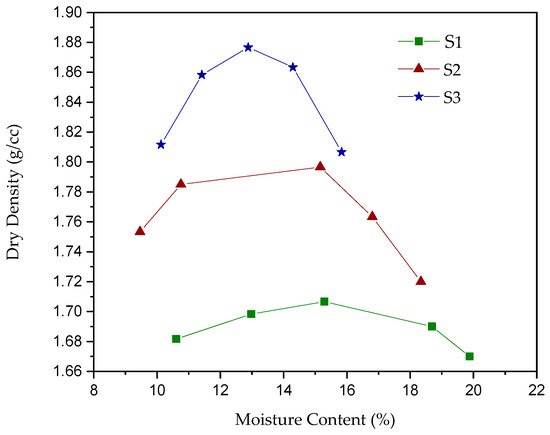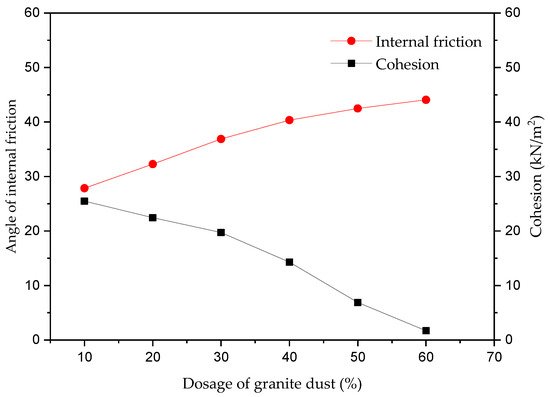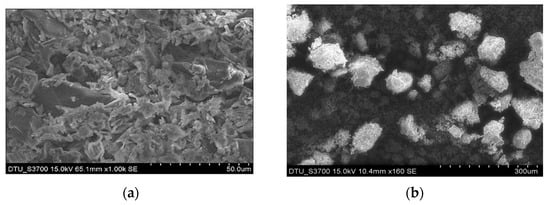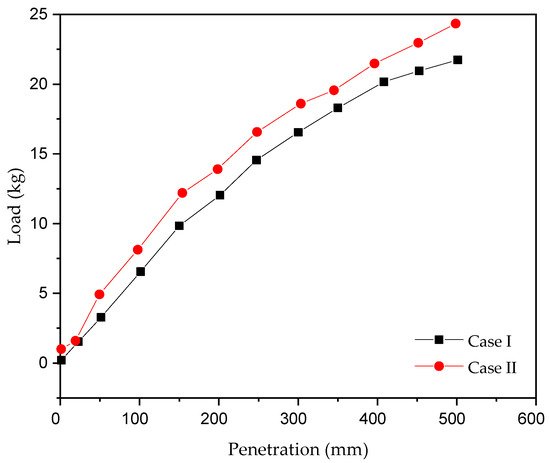The increase in infrastructure requirement drives people to use all types of soils, including poor soils. These poor soils, which are weak at construction, must be improved using different techniques. The extinction of natural resources and the increase in cost of available materials require us to think of alternate resources. The usage of industry by-products and related methods for improving the properties of different soils has been studied for several years. Granite dust is an industrial by-product originating from the primary crushing of aggregates. The production of huge quantities of granite dust in the industry causes severe problems from the handling to the disposal stage. Accordingly, in the civil engineering field, the massive utilization of granite dust has been proposed for various applications to resolve these issues.
1. Effect of Granite Dust Addition on the Geotechnical Properties
1.1. Atterberg Limits
Granite dust is a non-plastic material that cannot be influenced by water. Hence, adding granite dust to plastic soils reduces the plasticity index by breaking the particle–water–particle bond and the liquid and plastic limits. Works have been performed on red earth, kaolinite, and sun-dried marine clay, where the Atterberg limits decreased with the dosage increase
[1]. The sun-dried marine clay comparatively gave a better response with granite dust addition compared to the other two because the marine clay is a high-plastic soil with a poor gradation curve
[1] (
Table 1).
Table 1. Response of Atterberg limits with an increase in the dosage of granite dust (Modified after
[1]).
| Soil Type |
% Granite Dust |
Specific Gravity |
Liquid Limit (%) |
Plastic Limit (%) |
| Red earth |
0 |
2.70 |
40 |
25 |
| 20 |
2.72 |
35 |
Non-plastic |
| 40 |
2.74 |
27 |
- |
| 60 |
2.76 |
25 |
- |
| 80 |
2.78 |
24 |
- |
| Kaolinite |
0 |
2.6 |
55 |
30 |
| 20 |
2.64 |
47 |
19 |
| 40 |
2.68 |
37 |
Non-plastic |
| 60 |
2.72 |
30 |
- |
| 80 |
2.76 |
26 |
- |
| Sundried marine clay |
0 |
2.62 |
73 |
36 |
| 20 |
2.66 |
57 |
28 |
| 40 |
2.69 |
44 |
21 |
| 60 |
2.72 |
35 |
Non-plastic |
| 80 |
2.76 |
27 |
|
The high plasticity of soil decreased with the increase in the amount of added granite dust. The liquid limit decreased to 52%, with 60% granite dust addition. Similar works
[2][3] have investigated the low-strength/weak soil and concluded that adding granite dust to plastic and high-plastic soils decreases the liquid and plastic limits. Work has also been performed on the granite dust–black cotton soil mixtures and observed the decreasing behavior of Atterberg limits with an increase in granite dust addition
[4].
Table 2 lists the summary of the attempts made to improve the Atterberg’s limits of different soils with the addition of granite dust.
Table 2. Summary of the attempts to improve the Atterberg’s limits of different soils with the addition of granite dust.
| Soil Type |
Outcome |
Reference |
| Red earth |
Decreased gradually |
[1] |
| Lithomargic clay |
Significant decrease of liquid limit and plastic limit |
[3] |
| Black cotton soil |
Liquid limit is decreased by 42% at 40% addition of granite dust |
[4] |
Decrease in Atterberg’s limits of the soil is due to the decrease in finer fraction of the heterogeneous mix. Change in the finer fraction affects the water absorbing capacity of the soil.
1.2. Compaction Attributes
Maximum dry density (MDD) and optimum moisture content (OMC) are two significant parameters used to assess the field capacity of soil. Adding granite dust to soil increases the MDD and reduces the OMC due to the increase in coarser fraction and the specific gravity of soil–granite dust mixes
[3]. Moreover, the increase in the MDD was due to the shift in the gradation curve from a poor to a well-graded mix. In a work on quarry reclamation, granite dust was mixed with silty soil. A decrease in the OMC and an increase in the MDD were observed with the increments in the presence of granite dust (
Figure 1)
[5]. Generally high-plastic silts show an improved MDD and a decreased OMC with the gradual increase in granite dust substitution
[2]. Nwaiwu
[3] observed an increase in the MDD of black cotton soil–granite dust mixes and a decrease in the OMC at higher granite dust contents. Irrespective of compaction energy adopted, the addition of granite dust improved OMC and MDD relatively for several soils. Similar observations
[6][7] were identified in the case of clays and red earth soils, where an increase in the MDD of mixes were observed with a simultaneous reduction in the OMC values at higher percentages of granite dust dosages was noted. The compaction characteristics of residual soils improved with the addition of granite dust, which consequently led to an increase in the compaction energy
[8].
Figure 1. Influence of the granite dust dosage on the compaction characteristics S1: 75% soil + 25% granite dust; S2: 50% soil + 50% granite dust; and S3: 25% soil + 75% granite dust (Modified after
[5]).
The maximum dry density of mixed soils improves because of the substitution of dust particles in the clay voids and, to some extent, in silts. This will ensure that macro and micro-voids are minimized at higher compactive efforts. The MDD of marine clay increased by approximately 88%, which is higher compared to other soils as seen in Figure 2 (Adding granite dust to soils allows less water to absorb due to the increase in the coarser fraction compared to fines, which is particularly observed in clays, silts and clayey soils). These changes in the soil–granite mix help to improve the engineering properties of the soil.
Figure 2. Variation of MDD of different soils with granite dust (Modified after
[2][4]).
The change in compaction characteristics is due to the change in particle size distribution of the granite dust mixed soil. Formation of a well graded mix offers greater density and presence of granite dust breaks the water film around the clay particles.
1.3. California Bearing Ratio
To obtain the CBR, a static penetration test is performed to obtain the susceptibility of soil against wheel load penetration. According to
[2], the CBR value recommended by the RDA is 15% for subgrade in highway construction. In the case of kaolinite, red earth, and sun-dried marine clay, the CBR values increased with an increase in the percentage of granite dust
[1]. However, the percentage increase in CBR for a particular dosage of granite dust is more for clay soil due to the change in grain size distribution (
Table 3). Soils with high clay content showed a high improvement with granite dust addition.
Table 3. CBR characteristics of Granite dust amended soils (Modified after
[1]).
| Soil Type |
% Granite Dust |
Soaked CBR (%) |
Unsoaked CBR (%) |
| Red earth |
0 |
8.8 |
9.9 |
| 20 |
9.8 |
10.5 |
| 40 |
10.8 |
12.0 |
| 60 |
13.0 |
14.3 |
| 80 |
14.7 |
15.5 |
| Kaolinite |
0 |
5.2 |
7.8 |
| 20 |
6.7 |
8.8 |
| 40 |
8.8 |
10.8 |
| 60 |
18.7 |
20.8 |
| 80 |
20.8 |
22.8 |
| Sun-dried marine clay |
0 |
3.8 |
4.7 |
| 20 |
4.3 |
5.2 |
| 40 |
5.1 |
6.2 |
| 60 |
8.9 |
9.4 |
| 80 |
11.2 |
11.8 |
This increase in the CBR value is also influenced by the shear strength of the particular soil. In spite of the presence of weak soil, stabilization with granite dust brings the CBR value to the field requirement that helps to reduce the pavement thickness. The increase in the CBR values with the increase in the percentage of granite dust was observed until 50% granite dust addition in the case of black cotton soil
[4]. The CBR values of the residual soils increased with an increase in granite dust in soaked and unsoaked conditions
[8].
Table 4 shows summary of earlier works related to improvement in CBR characteristics of different soils.
Table 4. Summary of works to improve the CBR of the soils with granite dust.
| Soil Type |
Outcome |
Reference |
| Marine clay |
Good improvement at less amount of granite dust |
[1] |
| Residual soil |
Soaked CBR value is comparatively higher than un soaked |
[8] |
| Black cotton soil |
Significant increase at 50% addition of granite dust |
[4] |
1.4. Shear Strength
Sun-dried marine clay highly responded to the granite dust addition compared to red earth. The presence of granite dust in clays filled the voids and developed friction among the mixed particles
[6]. A significant improvement in the shear strength with the increase in internal friction and a corresponding decrease in the cohesive nature of high-plastic silt was observed up to 60% addition of granite dust as seen in
Figure 3.
Figure 3. Variation of shear parameters of high-plastic silt with granite dust addition (Modified after
[2]).
1.5. UCS and Permeability
The unconfined compressive strength of lithomargic clay is improved with addition of granite dust content up to 20% and decreased with a further increase in granite dust addition. The coefficient of permeability of lithomargic clay proportionally increased with the addition of granite dust
[7].
The wealth of literature summarized reveals that, granite dust enhances the geotechnical properties of silts and clays. High-plastic clays and clayey soils hold poor gradation; thus, the granite dust addition turns the mix into a well-graded complex that yields a high confinement as seen from Figure 4.
Figure 4. Change in the particle gradation of clay soil with granite dust addition.
2. Granite Dust as a Substitute for Sand
Kumar
[9] worked on different sub-base materials like flyash, coarse sand, granite dust, and river bed material (RBM). Granite dust was found to have the least resistance to rutting compared to the other three materials used in this study. The RBM has the maximum resistance to rutting. The static and resilient moduli were both higher for the RBM, implying that it had a better performance than the other three materials in the field. The internal friction angle ranged from 26° to 39°, and the specific gravity was nearly close to the specific gravity of river sand, which is required for the fractional sand replacement
[10]. From the chemical composition of granite dust, silica/quartz (SiO
2) is the predominant mineral that helps give a high shear strength similar to sand. Therefore, practically, granite dust can be used as a substitute for sand. Some previous investigation(s)
[11][12][13][14][15] proved that sand can be partially replaced with granite dust without changing the workability and durability of concrete. Furthermore, the shear strength of sandy soil increases with an increase in the percentage of the granite dust content in sand–granite dust mixes to a certain limit. This work concludes that granite dust is the best source of alternative to save sand availability.
3. Alternate Treatment Methods
Reinforced Granite Dust
Sand was earlier referred to as the best backfill material because of its shear strength and permeability characteristics. In view of sustainability, being a cohesion less inert material that can also be used as a backfill due to its bulk utilization, granite dust is also the best substitute for sand
[16]. A backfill material should not possess any lateral displacement of facia walls and should be able to resist the settlement due to loading. Granite dust is limited in cohesion property and high density; hence, the concept of granite dust reinforcement has been explored by certain authors. Among several reinforced materials, geosynthetics are considered as the best reinforcing materials due to their workability. Rama Subbarao
[17] stated that geo grid reinforcement reduces the shear deformations of granular materials. Reinforced granite dust exhibits a ductile behavior and improves apparent cohesion, but is insignificant in the case of friction. The deviatory stress is the governing factor of shear strength in the case of reinforced stone dust, especially in ductile reinforcements. The EPS geofoam was introduced in granite dust as the load-reduction key. Geofoam is more noticeable for gravelly and sandy fills. The interface shear strength of geofoam–granite dust is highly influenced by normal stress applied
[18]. In addition, the presence of geofoam reduces the backfill weight. Reinforced granite dust could be used as a backfill material, even at a lower relative density that reduces facia displacement and vertical settlements
[19]. The change in the dimensions of the reinforcement and its location also greatly influence the backfill behavior. Waste plastic strips serve as a reinforcing material for improving the penetration resistance of granite dust. Granite dust is highly influenced by the increase in the density of intruded plastic strips
[20]. Earlier works have stated that approximately 1% of plastic strip addition with an aspect ratio of 3 increases the soil CBR. The CBR was improved by the particle interlocking in reinforced layers under the dry condition (unsoaked) and the sedimentation of fines, in which the coarser particles to the top led to a confinement in the wet condition(soaked)
[17].
Backfills and soil walls are some of the bulk applications in geotechnical engineering. The reinforced granite dust material is the best substitute for sand. Being a high-density material, the reinforcement helps reduce the pressure on the facia walls, which consequently leads to the reduction of the horizontal displacement and the vertical settlement due to the interlocking phenomenon (Figure 5). The concept of reinforced granite dust also helps improve the penetration resistance due to the development of a confinement among particles.
Figure 5. Mechanism of reinforced granite dust.
4. Effect of Granite Dust and Stabilizer(s) on Geotechnical Behavior
Importance of the Stabilizer
Granite dust is a non-plastic cohesion less material with a specific gravity greater than that of soil. Adding granite dust to cohesive soil filled the voids in cohesive soil, which increases the density and the shear strength. However, in some cases, granite dust alone will not be sufficient to fulfil the requirements that may cause sudden drawdown or a slip as seen from Figure 6. The soil-granite mix requires a binding agent to bring an efficient product to work in the field that can withhold the heterogeneous mass.
Figure 6. Significance of the secondary stabilizer.
When clay soil was stabilized with granite dust, the plastic nature of the soil decreased with the increase in the granite dust dosage, leading to failure. The presence of a binding material prevented failure and increased the cohesion which enhanced the engineering properties. Black cotton soil when amended with lime and granite dust exhibited better performance compared to untreated scenario
[21]. The ettringite formation increased the strength of the soil–granite dust mix (
Figure 7). Granite dust, along with calcium carbide residue (CCR) in equal amounts, showed a good influence on problematic silty clay in terms of the CBR (
Figure 8)
[22]. The presence of the CCR in silty clay led to pozzolanic reactions and increased the chemical bonding between particles.
Figure 7. SEM images (
a) of black cotton soil and (
b) black cotton soil mixed with 9% lime and plugged with 25% granite dust (Sourced from
[21]).
Figure 8. Response for the soaked CBR test after 14 days of curing. Case I-Soil + 5% granite dust + 5% CCR. Case II-Soil + 10% granite dust + 10% CCR (Modified after
[22]).
Some works on foundation soil improvement were performed using granite dust and cement, where the soil was improved with the incremental addition of granite dust with 4% cement addition. Granite dust with 10% cement addition improved the shear strength and the hydraulic properties of lithomargic clay
[7]. The presence of cement led to ettringite formation, which helps in developing additional strength and cohesion. The presence of cement also helped in decreasing the pore volume. Dutta and Sarda
[20] used a waste plastic strip with granite dust/flyash to improve the kaolinite clay properties. The CBR variation in the mix was attributed to the strip intrusion and the strip length in granite dust. The high-plastic silt was added with cement and granite to improve the CBR
[2]. Quarry wastes in the form of granite powder and muck could be used as a supplemental subgrade material when added with lime
[23]. The effects of quick lime on compacted granite dust were also studied, and the bearing capacity was found to improve with quick lime addition.
Table 5 provides the summary of various earlier works which necessitated the inclusion of binder to granite dust.
Table 5. A Summary of works to improve the properties of soil mixed with granite dust and a binder.
| Soil Type |
Outcome |
Reference |
| Black cotton soil with lime and granite dust |
Cohesion increased. Good improvement observed in engineering properties |
[21] |
| Silty clay with CCR and granite dust |
Good chemical bonding appeared. CBR increased |
[22] |
| Lithomargic clay with granite dust and cement |
Strength and cohesion increased. Pore volume decreased |
[7] |
| Kaolinite clay with granite dust/flyash with waste plastic |
CBR increased |
[20] |
| High plastic silt with cement and granite dust |
CBR improved |
[2] |
This entry is adapted from the peer-reviewed paper 10.3390/cryst11121526








